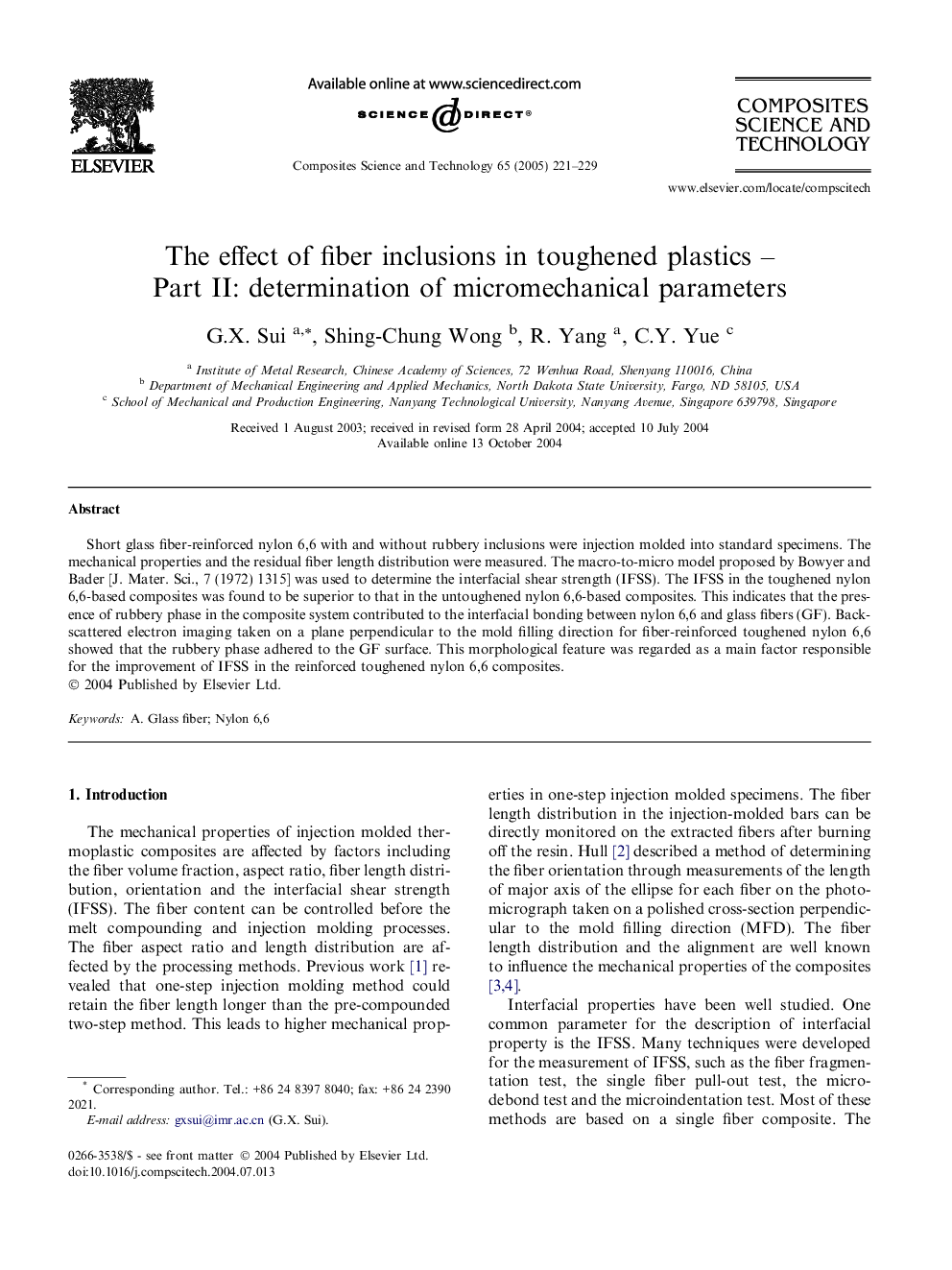| Article ID | Journal | Published Year | Pages | File Type |
|---|---|---|---|---|
| 10425559 | Composites Science and Technology | 2005 | 9 Pages |
Abstract
Short glass fiber-reinforced nylon 6,6 with and without rubbery inclusions were injection molded into standard specimens. The mechanical properties and the residual fiber length distribution were measured. The macro-to-micro model proposed by Bowyer and Bader [J. Mater. Sci., 7 (1972) 1315] was used to determine the interfacial shear strength (IFSS). The IFSS in the toughened nylon 6,6-based composites was found to be superior to that in the untoughened nylon 6,6-based composites. This indicates that the presence of rubbery phase in the composite system contributed to the interfacial bonding between nylon 6,6 and glass fibers (GF). Back-scattered electron imaging taken on a plane perpendicular to the mold filling direction for fiber-reinforced toughened nylon 6,6 showed that the rubbery phase adhered to the GF surface. This morphological feature was regarded as a main factor responsible for the improvement of IFSS in the reinforced toughened nylon 6,6 composites.
Keywords
Related Topics
Physical Sciences and Engineering
Engineering
Engineering (General)
Authors
G.X. Sui, Shing-Chung Wong, R. Yang, C.Y. Yue,
